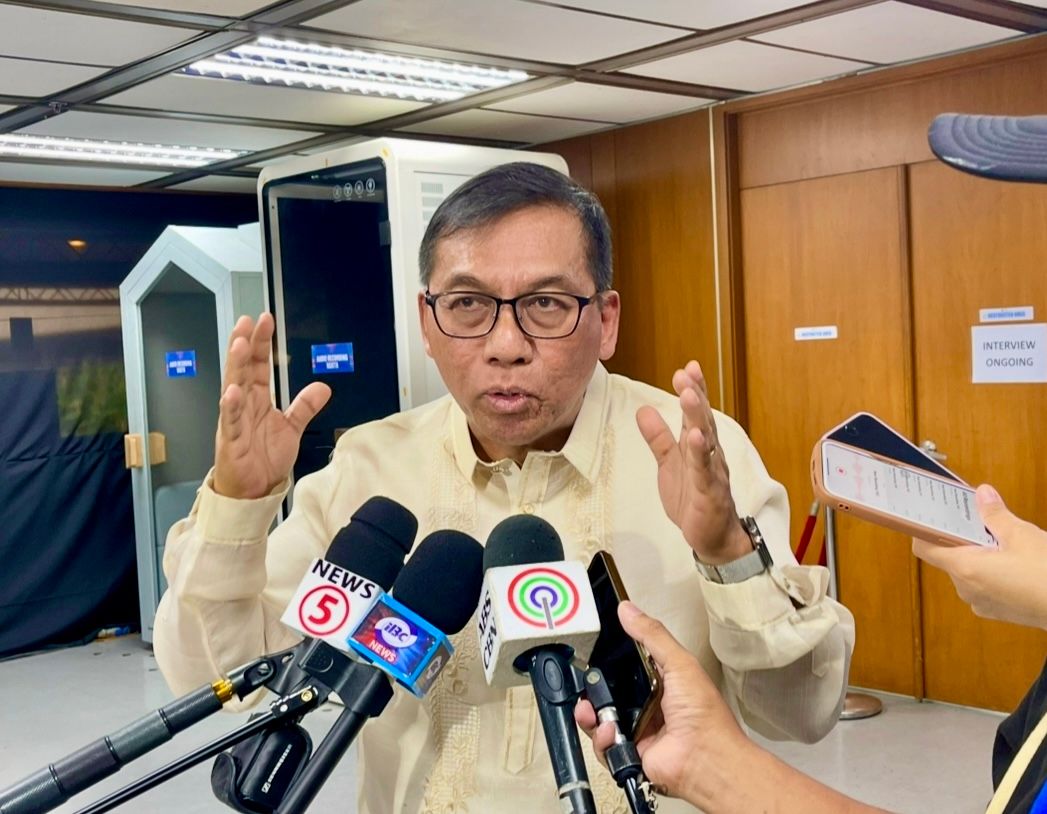
Filipinos must continue preparing for “The Big One,” which could occur at any time, Department of Science and Technology (DOST) Secretary Renato Solidum Jr. said on Thursday, Oct. 17.
During a session at the Asia-Pacific Ministerial Conference on Disaster Risk Reduction (APMCDRR) on Wednesday, Oct. 16, Alexander Pama, former executive director of the National Disaster Risk Reduction and Management Council (NDRRMC) and former Office of Civil Defense (OCD) administrator, said nearly 47,000 people are expected to become casualties if “The Big One” hit the Philippines this year.
“Kailangan nating huwag tigilan ang paghahanda sa malaking lindol na posibleng marami ang maapektuhan kapag nangyari. Because compared to many other hazards, iyong lindol nasisira ang building, kapag baha eh dumadaan ang tubig (We must not stop preparing for the big earthquake that could affect many people when it happens. Because compared to many other hazards, an earthquake destroys buildings, whereas in a flood, the water eventually passes),” Solidum said during an ambush interview at the APMCDRR’s Media Center in Pasay City.
According to Solidum, the data provided by Pama came from the Philippine Institute of Volcanology and Seismology(Phivolcs).
“Iyong datos ni dating Usec. Pama ay galing sa amin iyon noong director pa ako [ng Phivolcs] (The data of former Usec. Pama came from us when I was still the director of Phivolcs),” he said, confirming its accuracy.
If the source of the earthquake is the West Valley Fault, the DOST chief said around 50,000 deaths are to be expected from the greater Metro Manila, including its neighboring areas Bulacan, Rizal, Cavite, Laguna, and partly Pampanga.
“That’s our estimated number of deaths if we are not going to do anything,” said Solidum.
At least 25,000 to 30,000, he said, are expected to be critically injured when “The Big One” hits.
“And around mga 25,000 to 30,000 ang very critically injured, meaning puwedeng tumawid sa injury to death so 'yung ang tinitingnan nating datos ngayon sa death or injury na kailangan nating tingnan na marami (And around 25,000 to 30,000 people would be critically injured, meaning their injuries could turn fatal. So, that is the data we’re currently looking at in terms of deaths or injuries, which we need to closely monitor),” he stated.
Expand preparedness beyond Metro Manila
Solidum said that their suggestion is to expand the preparedness beyond Metro Manila so that when “The Big One” hits, even the nearby provinces would be fully equipped with life-saving knowledge and tools.
“In time, nagiging vulnerable ang mga building… So ‘yung mga building na ‘yan, may lifetime lang ‘yan so dapat chine-check ‘yan regularly. Importante talaga na regular ang review. And we have been doing that. Ang suggestion namin ay i-expand ang preparedness beyond Metro Manila lalong-lalo na sa karatig probinsya ( Over time, buildings become vulnerable… Those buildings have a limited lifespan, so they should be checked regularly. It’s really important to conduct regular reviews, and we’ve been doing that. Our suggestion is to expand preparedness beyond Metro Manila, especially to nearby provinces),” he said.
Solidum said the greater Metro Manila area study conducted during the time of Pama needs to be validated.
“Kaya nga during the time ni Admiral Pama, gumawa kami ng greater Metro Manila area study. This needs to be validated again and further acted upon para ‘yung ibang mga probinsya outside of Metro Manila and even sa Metro Manila kasi bago na ang mga mayor ay masanay sa kahandaan na kailangan pagdating sa malakas na lindol (That’s why, during Admiral Pama’s time, we conducted a Greater Metro Manila Area study. This needs to be validated again and further acted upon so that provinces outside of Metro Manila, and even within Metro Manila, especially with the new mayors, become accustomed to the preparedness required for a major earthquake),” he said.
The DOST chief said Filipinos dwelling in illegal settlements are the most vulnerable once the strong earthquake jolts Metro Manila.
“Critical po ang mga mababang building, baka akalain niyo ay iyong high-rise ang problema. Kapag malapit po ang lindol sa isang lugar, ang galaw po ng lupa ay mabilis, ang tawag po diyan ay high frequency shaking. Ang mas mapapagalaw mo ay ang mga building na magagaan. Ano po ba ang mga building na magagaan? Syempre iyong maiikli (Low-rise buildings are critical; you might think that high-rise buildings are the problem. When an earthquake is close to a location, the ground movement is fast, which is called high-frequency shaking. The buildings that are more affected are the lighter ones. What are the lighter buildings? Of course, the shorter ones),” he said.
“Huwag po nating isipin na kapag one-floor lang ang building natin ay safe na sa earthquake. In fact, maraming nasisirang ganoon (Let’s not think that just because our building is only one floor, it’s safe from earthquakes. In fact, many such buildings are damaged).”
Anticipated as “The Big One,” this massive earthquake could be caused by the movement of the West Valley Fault, which cuts through eastern Metro Manila and surrounding provinces.
Experts warn that it could reach a magnitude of 7.2 or higher, potentially leading to widespread devastation, especially in heavily populated regions.